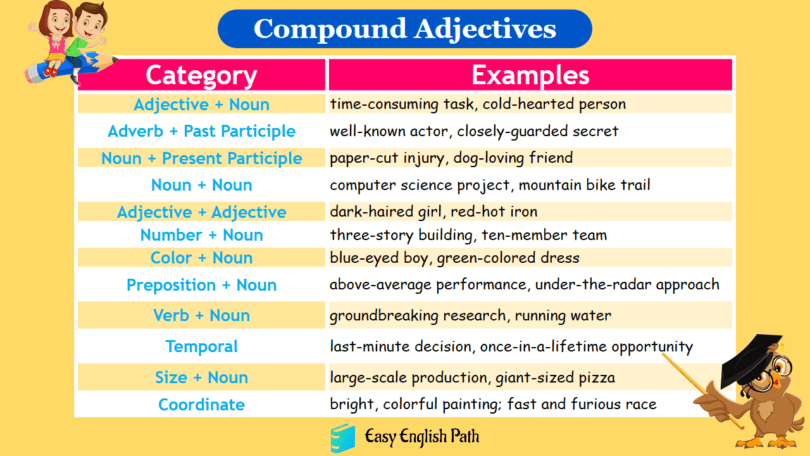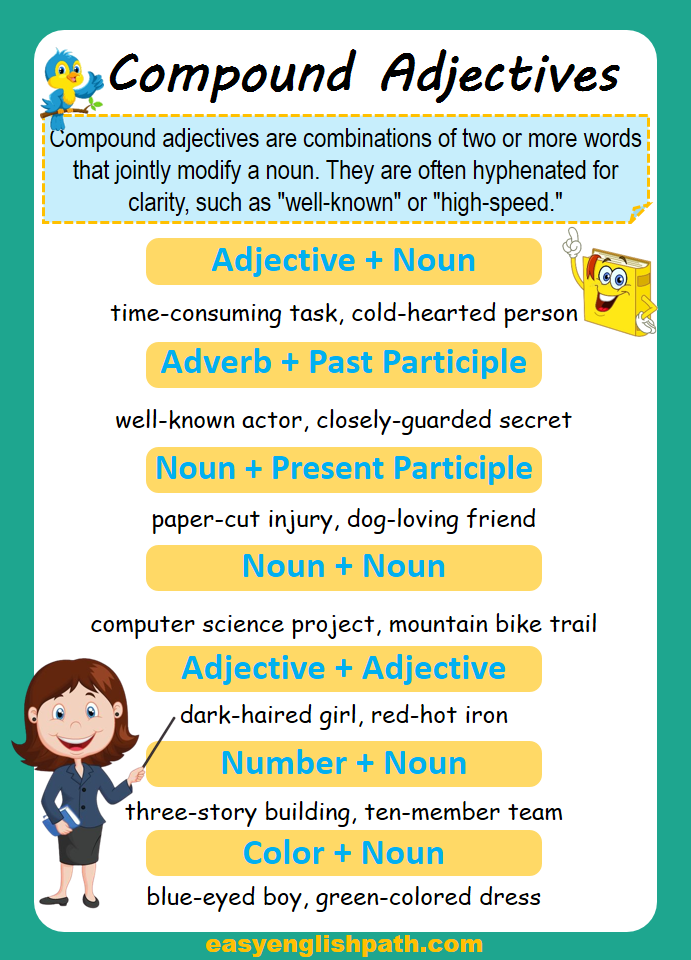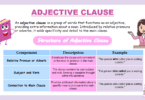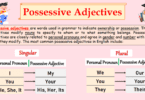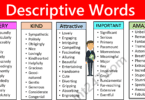Definition of Compound Adjectives:
A compound adjective is made up of two or more words that work together to describe a noun. These words are often connected by hyphens to show they are a single unit describing the noun. For example, in a well-known author, well-known is a compound adjective describing the author.
Examples:
- The beach was sun-soaked.
- His presentation was fast-paced.
- The couple was well-dressed.
- We ate at a family-owned restaurant.
We use hyphens in compound adjectives when the words come before the noun they are describing.
Before the Noun:
Use a hyphen when the compound adjective comes directly before the noun.
-
- A well-known author.
Avoid Ambiguity:
Use a hyphen to avoid confusion or ambiguity.
-
- A small-business owner vs. A small business owner
With Numbers and Fractions:
Use a hyphen when numbers or fractions are part of the compound adjective.
-
- A ten-year-old child or A thirds majority.
Adverbs Not Ending in -ly:
Use a hyphen with compound adjectives formed from adverbs that do not end in -ly.
-
- A well-known fact but A highly regarded scientist (no hyphen with -ly adverbs).
Part-time and High-profile:
Use a hyphen with common compound adjectives like part-time and high-profile.
-
- A part-time job or A high-profile case.
However, when the compound adjective comes after the noun, the hyphen is usually not needed.
- The author is well known.
Comparative Adjectives vs Superlative Adjectives
Comparative Adjectives
Comparative adjectives are used to compare differences between two objects. They typically end in “-er” or are preceded by “more” for longer adjectives.
Examples:
- Tall → Taller
- Fast → Faster
- Beautiful → More Beautiful
- Good → Better
- Expensive → More Expensive
Superlative Adjectives
Superlative adjectives are used to describe an object that is at the upper or lower limit of a quality. They typically end in “-est” or are preceded by “most” for longer adjectives.
Examples:
- Tall → Tallest
- Fast → Fastest
- Beautiful → Most Beautiful
- Good → Best
- Expensive → Most Expensive
Spelling Rules for Comparative Adjectives
One-Syllable Adjectives: Add -er
- Tall → Taller
- Fast → Faster
- Cold → Colder
2. One-Syllable Adjectives Ending in -e: Add -r
- Large → Larger
- Safe → Safer
- Wide → Wider
3. One-Syllable Adjectives Ending in a Single Vowel Followed by a Single Consonant: Double the Consonant and Add -er
- Big → Bigger
- Hot → Hotter
- Thin → Thinner
4. Adjectives with Two Syllables Ending in -y: Change -y to -i and Add -er
- Happy → Happier
- Busy → Busier
- Early → Earlier
5. Adjectives with Two or More Syllables: Use “More” Before the Adjective
- Beautiful → More Beautiful
- Expensive → More Expensive
- Comfortable → More Comfortable
6. Irregular Adjectives
- Good → Better
- Bad → Worse
- Far → Farther

